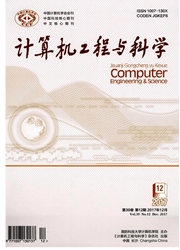

 中文摘要:
中文摘要:
最近,因为他们的唯一的结构和性质, ultrathin nanostructures 的合成吸引了增加的兴趣。在这个工作,我们用一个环境地友好的水的方法报导 sub-2.0-nm Ru 和作文悦耳的 RuPt nanowire 网络的合成。结构用传播电子显微镜学(TEM ) 被描绘,高分辨率的 TEM, X 光检查衍射(XRD ) ,和精力散的 X 光检查(EDX ) 光谱学。而且,钠 n-dodecyl 硫酸盐的联合利用和钾氟化物决心在这些 ultrathin nanostructures 的形成起一个关键作用。sub-2.0-nm RuPt nanowire 网络的 electrocatalytic 性质在酸的媒介为甲醇氧化被调查。nanostructures 显示了作文依赖者性质,并且与商业 Ru 50 磅 50/C, 同样综合的 Ru 56 磅 44 ultrathin nanowire 网络展出提高的稳定性。
 英文摘要:
英文摘要:
Recently, the synthesis of ultrathin nanostructures has attracted increasing interest because of their unique structure and properties. In this work, we report the synthesis of sub-2.0-nm Ru and composition-tunable RuPt nanowire networks using an environmentally friendly aqueous method. The structures were characterized using transmission electron microscopy (TEM), high-resolution TEM, X-ray diffraction (XRD), and energy-dispersive X-ray (EDX) spectroscopy. Moreover, the combined utilization of sodium n-dodecyl sulfate and potassium fluoride was determined to play a key role in the formation of these ultrathin nanostructures. The electrocatalytic properties of the sub-2.0-nm RuPt nanowire networks were investigated for methanol oxidation in an acidic medium. The nanostructures displayed composition-dependent properties, and compared with commercial Ru50Pt50/C, the as-synthesized Ru56Pt44 ultrathin nanowire network exhibited enhanced stability.
 同期刊论文项目
同期刊论文项目
 同项目期刊论文
同项目期刊论文
 期刊信息
期刊信息
